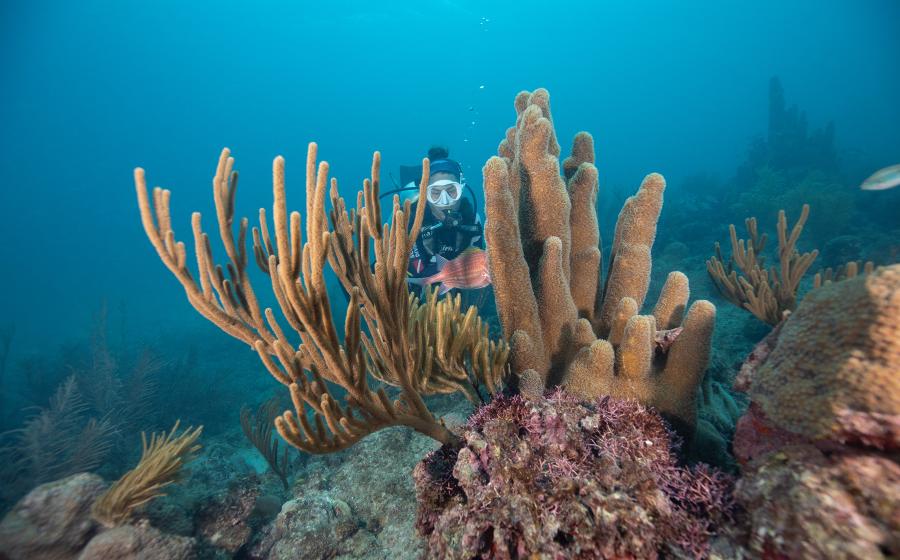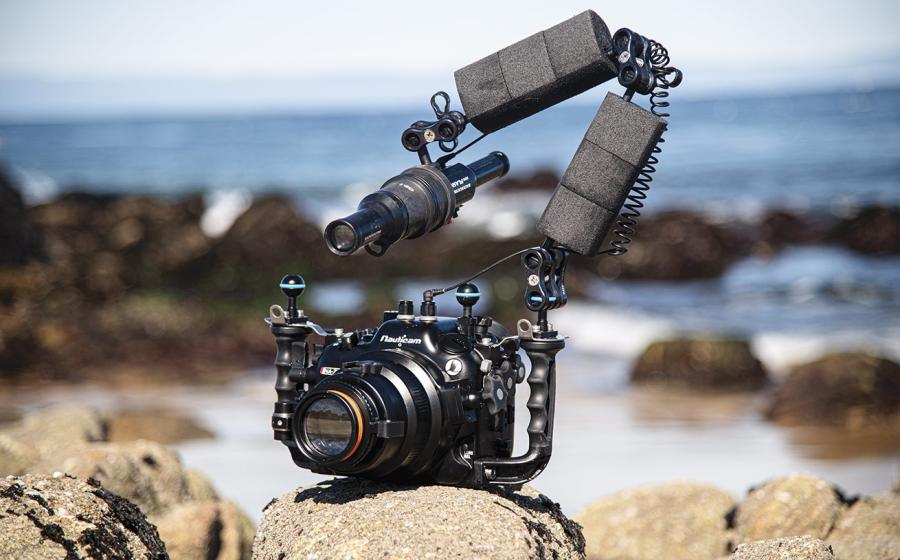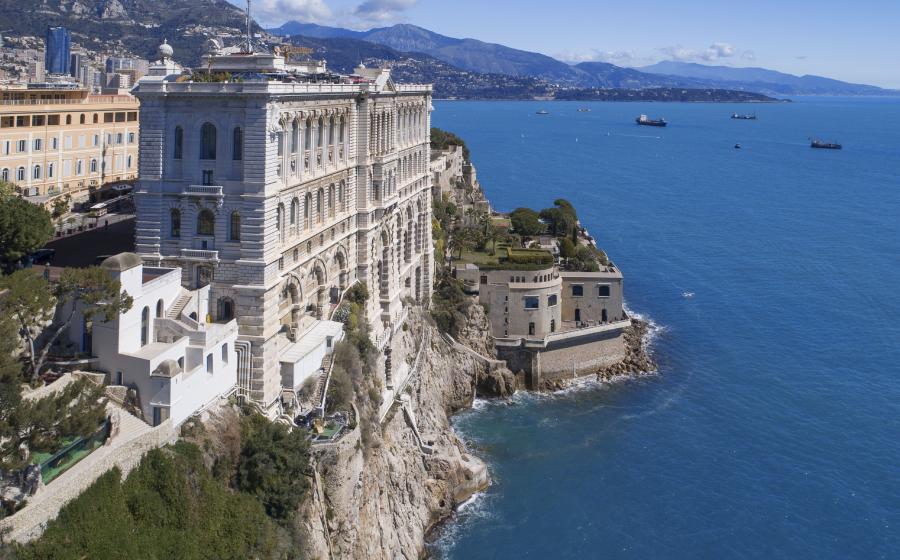5 Creative Lighting Tips for Underwater Photographers
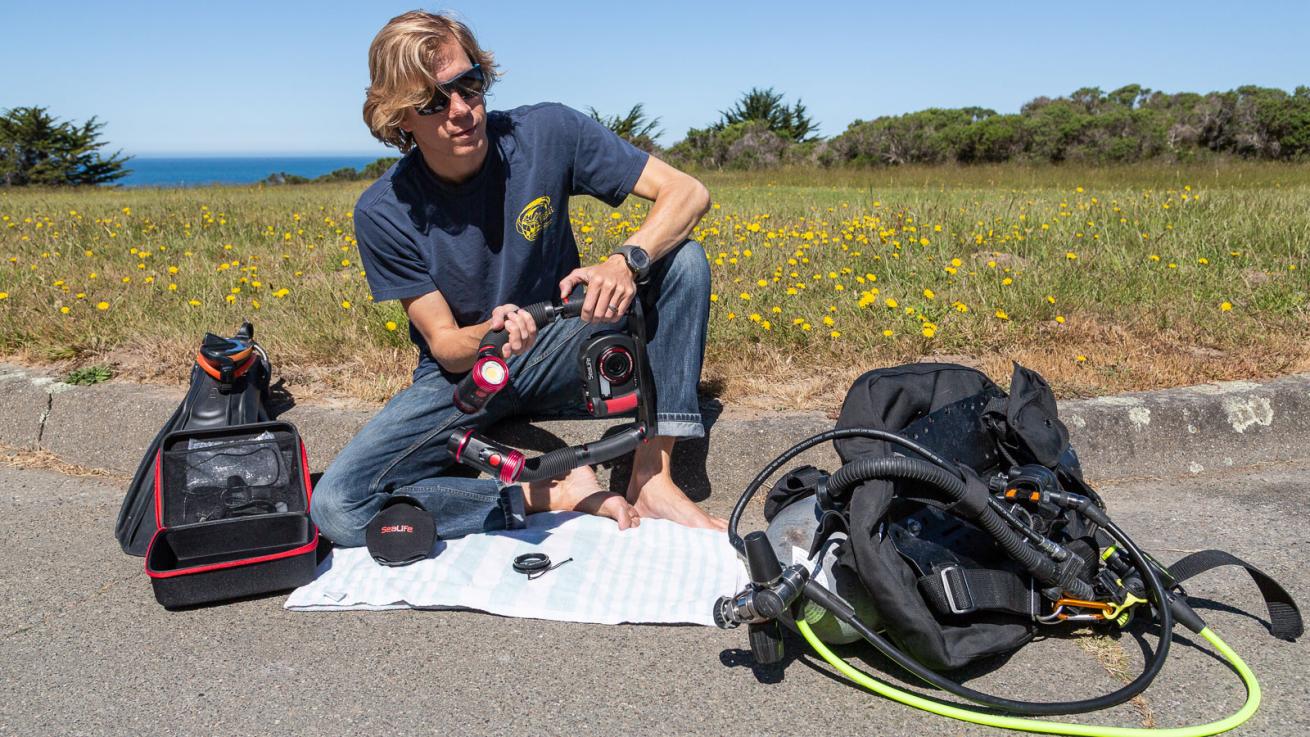
Brent DurandNew photographers will appreciate the SeaLife DC2000's automatic and underwater shooting modes, simple menu navigation and effortless piano key controls.
The SeaLife DC2000 is a versatile underwater camera. New photographers will appreciate its automatic and underwater shooting modes, simple menu navigation and effortless piano key controls. Advanced shooters will look towards the full manual settings, wet lenses for wide-angle and macro, 20MP 1-inch image sensor and RAW image capture.
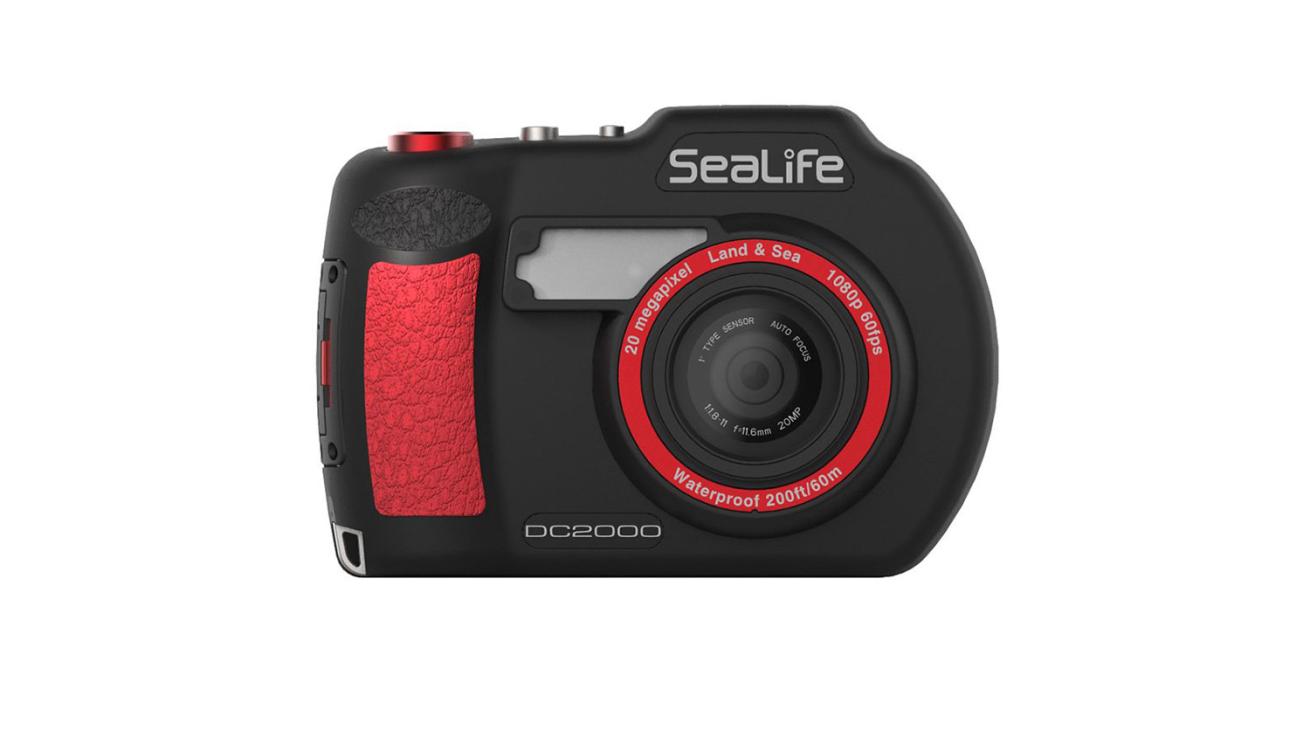
SeaLifeA versatile underwater camera, the SeaLife DC2000 has features that will appeal to new and advanced underwater photographers alike.
But how do we take our photos to the next level? How can we create images that really make the subject stand out? The answer is creative lighting.
They say that photography is all about the light, so it makes sense that the more we experiment with light, the more unique our images will become. We can use creative combinations of ambient sunlight, strobes and dive/video lights to create special effects for different subjects. Let’s take a closer look at some of these techniques.
Constant Lighting
Constant lighting is the technique for using your dive or video light (instead of a strobe) to bring color and contrast back into a foreground subject. It’s a great technique for those who don’t have a strobe or who use lights for shooting video but also want to capture the occasional still photo. When the light(s) is well-positioned and the exposure settings are dialed in, this technique can even help capture precise action shots not possible with strobes.
Light positioning is straight-forward with constant lights since you can see where the beam will illuminate the subject.
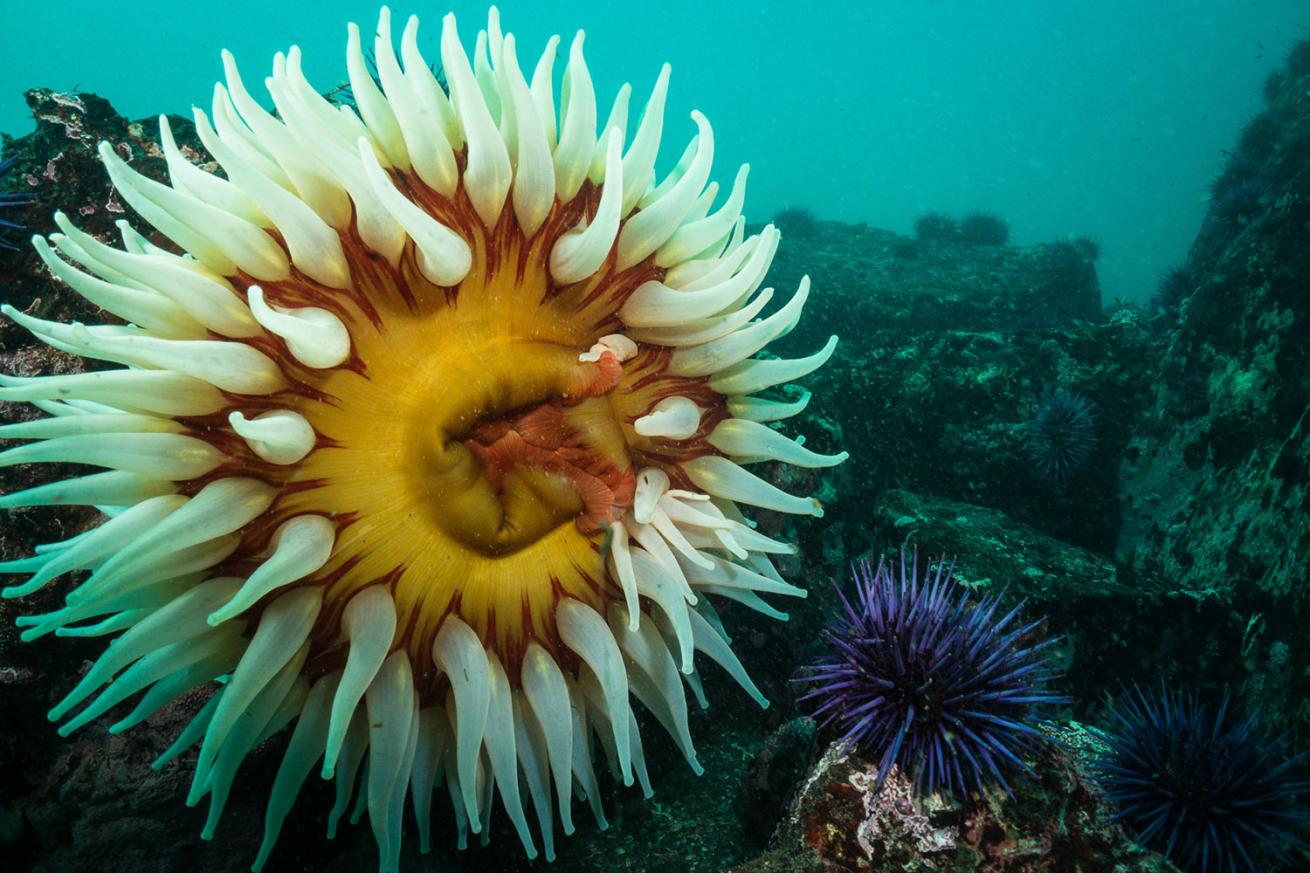
Brent DurandCreative lighting helps take underwater photography to the next level.
Exposure can be adjusted by metering the scene in front of you (noting the EV display on the DC2000). There is no need to anticipate strobe flash since you can already see the lights. Automatic shooters can use SeaLife’s Underwater Scene Mode set to Ext Light, which will determine the best exposure for the scene.
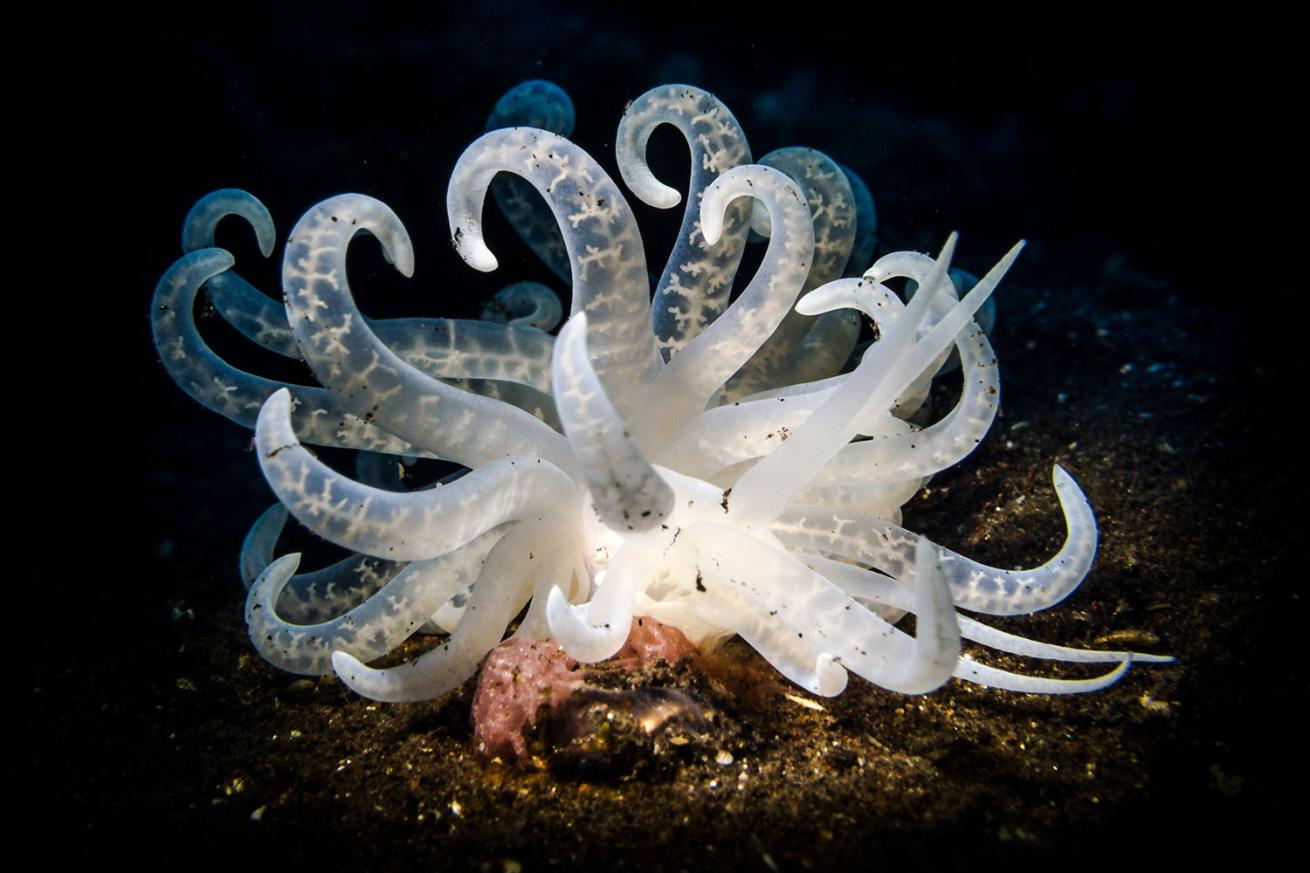
Tobias FriedrichThe more we experiment with light, the more unique our images will become.
Handheld Lighting
Precise lighting is essential not just to create a vibrant image with depth, but also to minimize backscatter. In general, we want to aim our light or strobe on the subject without illuminating any extra water around it. The less water we illuminate, the less chance of seeing backscatter in our images.
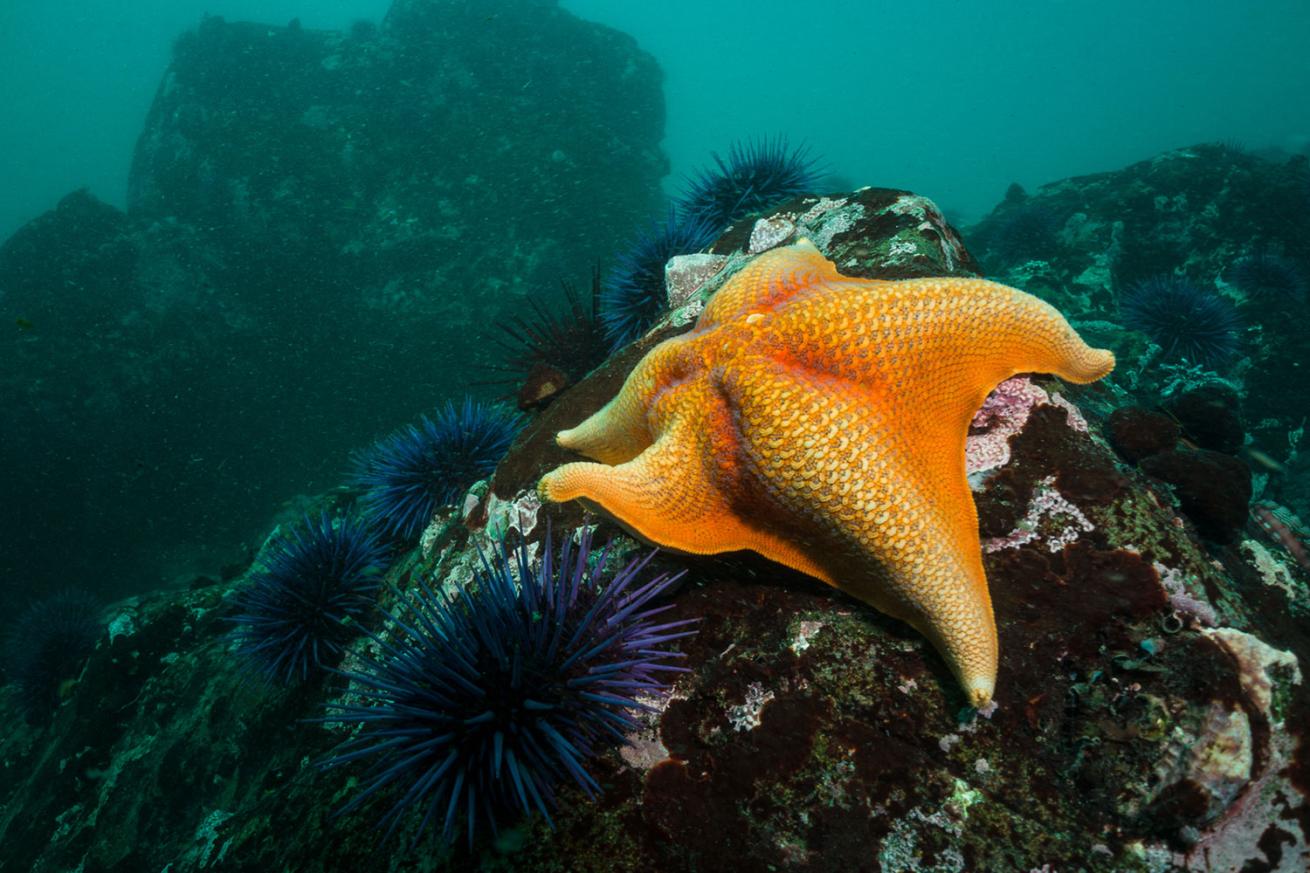
Brent DurandPrecise lighting is essential not just to create a vibrant image with depth, but also to minimize backscatter.
To achieve this precise light positioning, I frequently remove the Sea Dragon lights from the Flex Arms. One quick press of the release lever and the light is in my hand, ready to be positioned at any angle to the subject. Once finished with the shot, simply insert the light into the arm until the lock clicks. Naturally, this technique can only be used with one light at a time, since the right hand has to hold the camera.
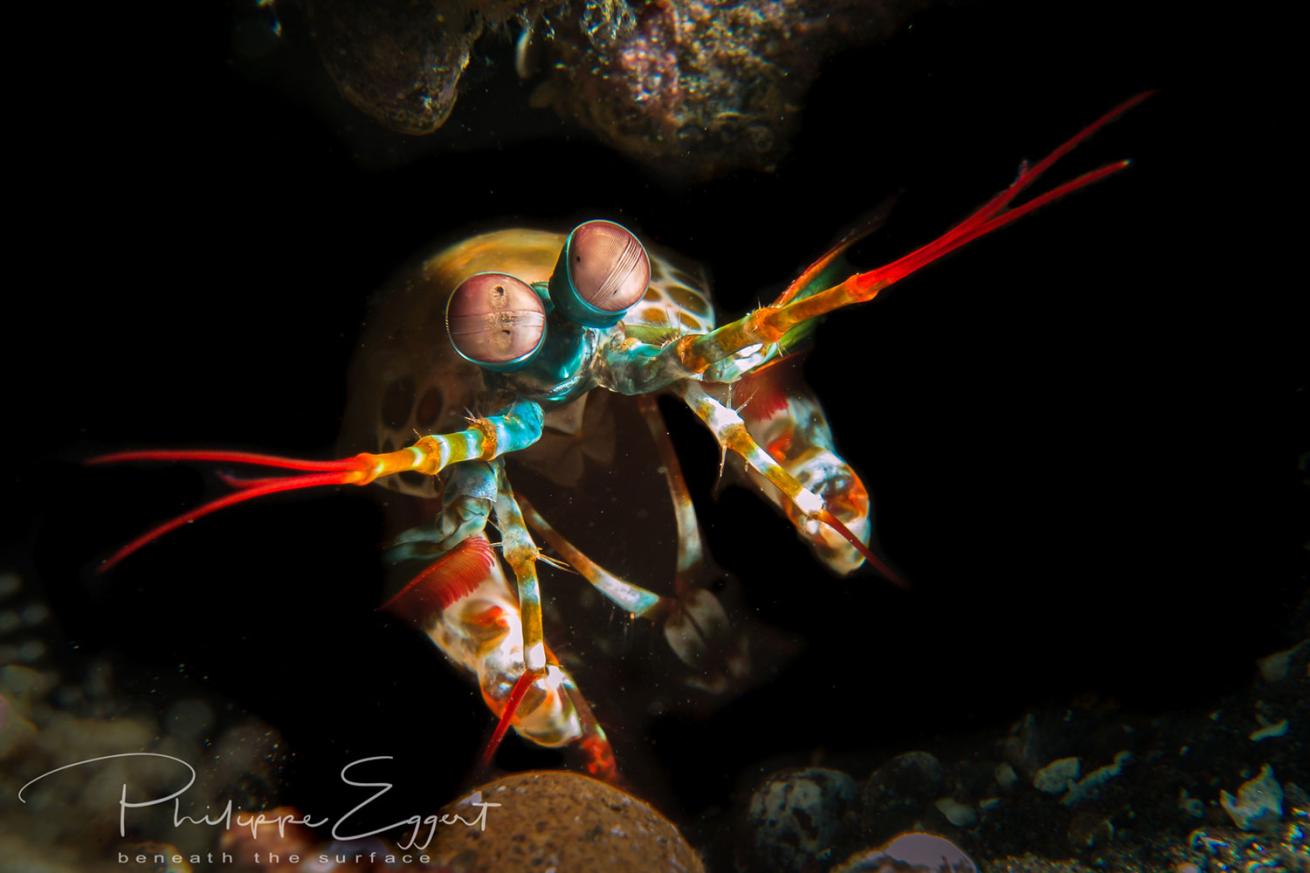
Philippe EggertPrecise lighting is essential for minimizing backscatter.
The Glow Effect
Many photo subjects we encounter underwater have translucent properties that will glow when light is shining through them. Anemones, nudibranchs and many gobies are great examples of this.
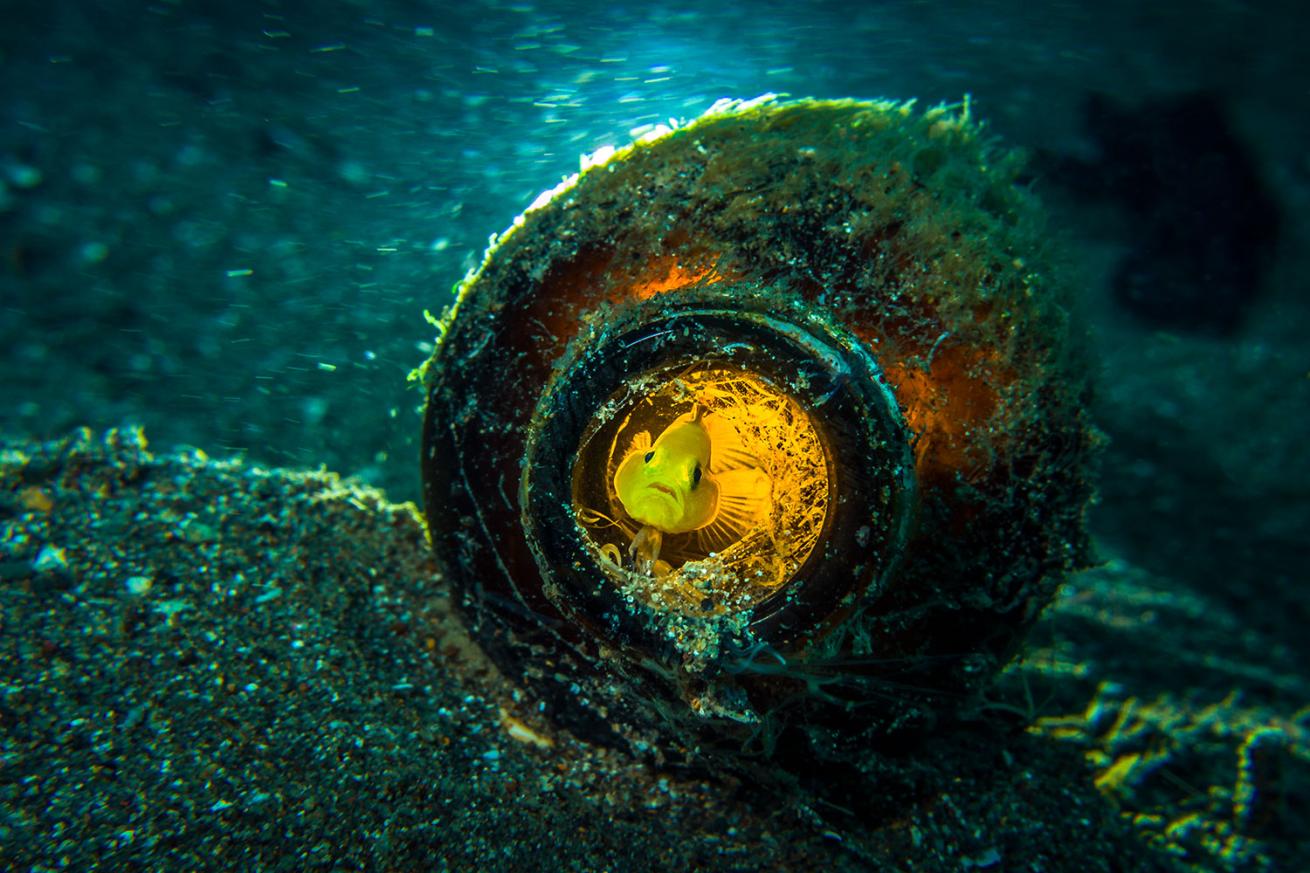
Tobias FriedrichLighting the subject from the side instead of from the front will help bring out a subject's translucent properties.
The easiest way to achieve this effect is through side lighting. The simple trick is to light the subject from the side instead of from the front. Two lights are generally best for this technique so that you can minimize shadows, especially on the front or face of the subject.
Key & Fill Lighting
Many successful underwater photographers have brought lighting principals from the studio to their marine subjects. The big takeaway is that both of your lights do not need to be shooting at the same intensity.
For example, you can use a brighter light on the side of the subject’s face. If you’re shooting in portrait orientation, try turning down the lower light to minimize the Halloween-like bottom lighting. Maybe you have two lights but the composition only calls for one.
Controlling the power level is as easy as pressing the power button on the Sea Dragon lights or adjusting the exposure compensation knob on the Sea Dragon flash. Just remember to return the settings to the default when you’re finished with the shot – you never know when a rare animal might surprise you!
Ambient + Artificial Light
This technique combines a nice blue or green water background with a bright foreground subject. It’s often used for wide-angle photos but could also apply to macro. The most important part of this technique is composing the shot so that that camera is angled up into the water column (instead of horizontally). Shooting at this angle will present a nice, light water color to work with.
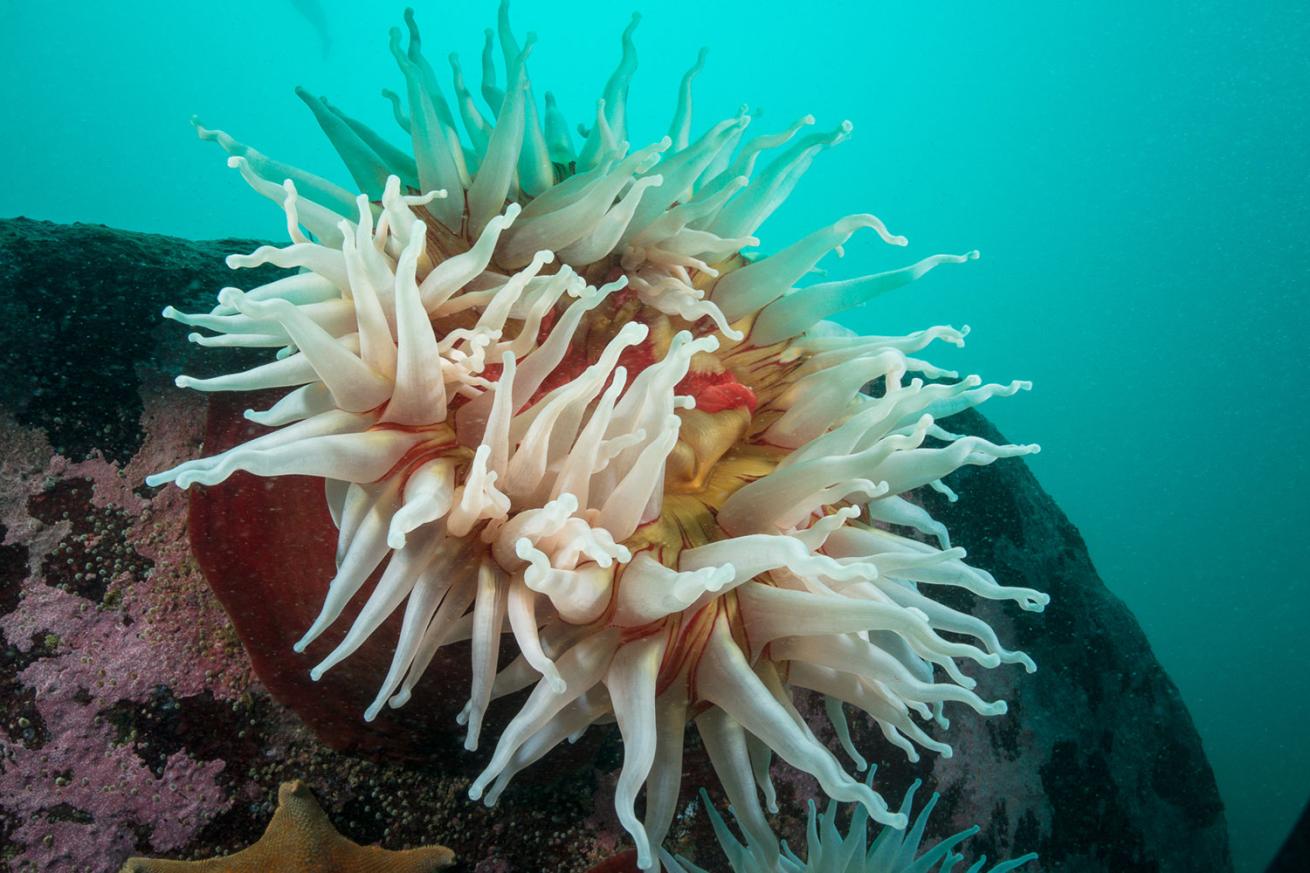
Brent DurandThe first step in manual mode is to dial in the exposure of the blue water background.
If you’re using the DC2000’s Underwater Scene Modes, you just need to position your foreground light and capture the shot. If you’re shooting in manual mode, the first step is to dial in the exposure of the blue water background. Once this is set, turn on your light or strobe and adjust that power to illuminate the foreground. The result should be a beautiful blend of ambient and artificial light.
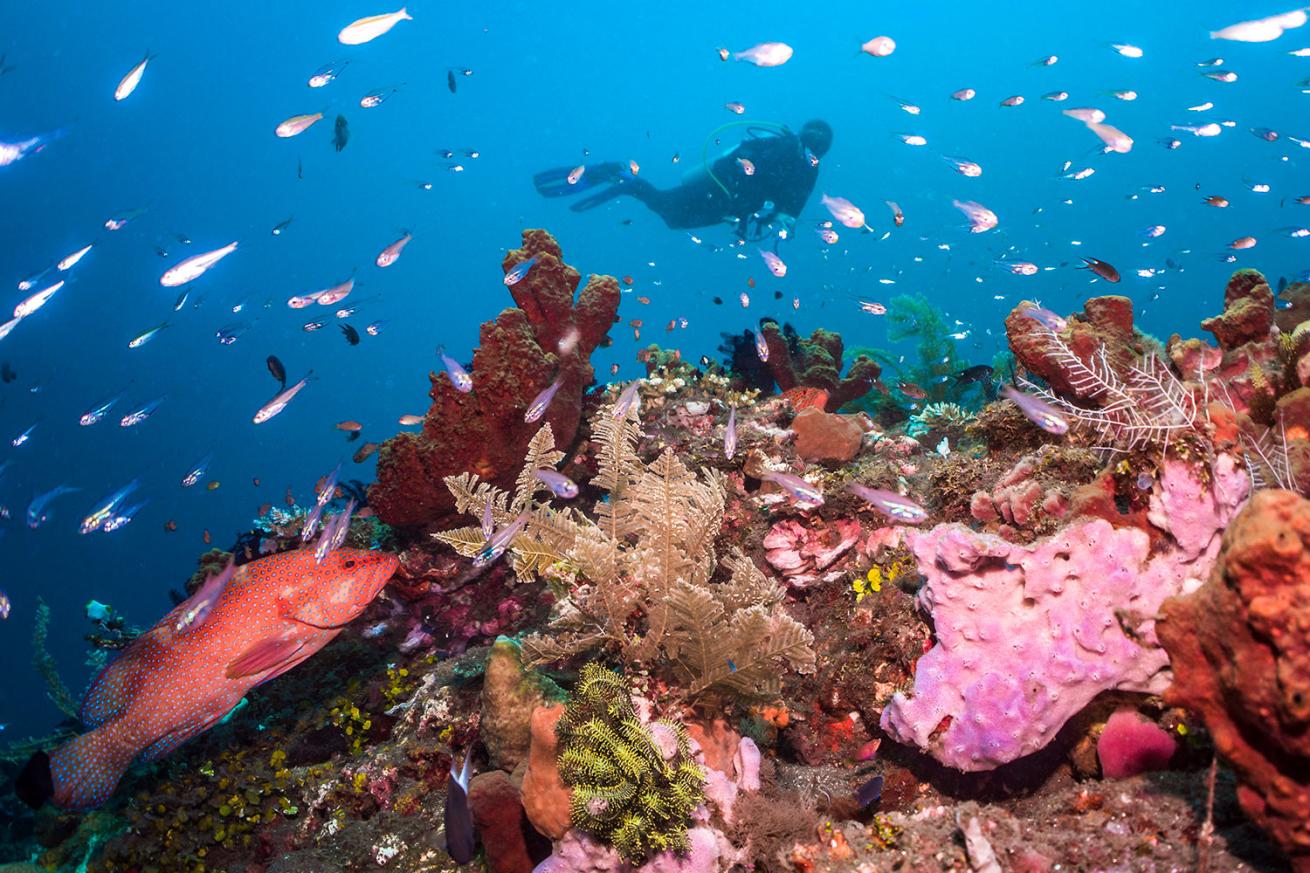
Tobias FriedrichFollow the steps and your result should be stunning.








